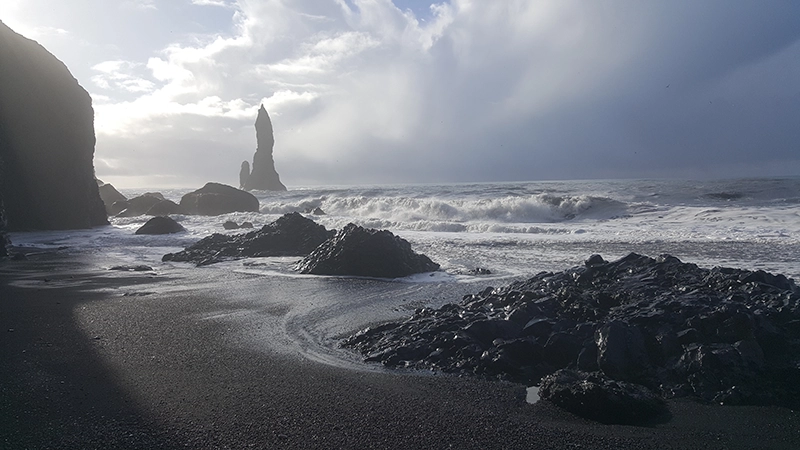
REYNISFJARA BEACH | MYRDALSHREPPUR ICELAND
Reynisfjara Beach
Reynisfjara Beach is a world famous black sand beach located on Iceland's south coast, near the village of Vík. It is known for its volcanic black sand and large basalt sea stacks. The area is home to fascinating bird life including puffins, fulmars and guillemots.
Reynifara is one of Iceland's most popular black sand beaches and was voted as one of the Top 10 non-tropical beaches in the world by National Geographic in 1991.
The trip to Reynisfjara Beach from Reykjavík is an easy drive along Iceland’s Ring Road. It is only 112 miles from Reykjavik and takes less than 3 hours.
Reynisdrangar
The Reynisdrangar are basalt sea stacks located just off the shore of Reynisfjara Beach and below the mountain Reynisfjall.
An ancient legend says the pillars are three tolls who were turned to stone by the light of the sunrise while dragging their boat to shore.
Another legend says the pillars are trolls who murdered the wife of a farmer. Regardless of which legend is true, Reynisdrangar has become one of Iceland’s most iconic landmarks.
Dyrhólaey
Adjacent to Reynisfijara is the equally impressive attraction of Dyrhólaey featuring towering cliffs, an Icelandic lighthouse, and amazing views of the surrounding area. This massive rock formation is home to various species of birds and is a nesting ground for Atlantic puffins during the summer.
Dyrhólaey features a distinctive rock arch from which it gets its name. Dyrhólaey means “Door Hill Island” in Icelandic. The promontory is the southernmost point in mainland iceland. Atop Dyrhólaey there are impressive views in every direction, to the north is the glacier Mýrdalsjökull, to the east are the basalt sea stacks of the Reynisdrangar, to the west is a seemingly endless coastline of black sand towards Selfoss, and to the south is the vast Atlantic Ocean. Other nearby attractions include Selfoss and Skógafoss, two of Iceland’s most popular waterfalls.
Danger
Like most of Iceland's natural attractions, the beach is as dangerous as it is beautiful. Visitors should take the warnings on the beach seriously, as there have been numerous fatalities on the beach over the years. The most dangerous feature of the beach are called “sneaker waves”, which are deceptively large waves that strike without warning and pull visitors out to sea.
Image Gallery
PHOTOS OF REYNISFJARA BEACH

Volcanic black sand, basalt stacks, and the roaring North Atlantic.
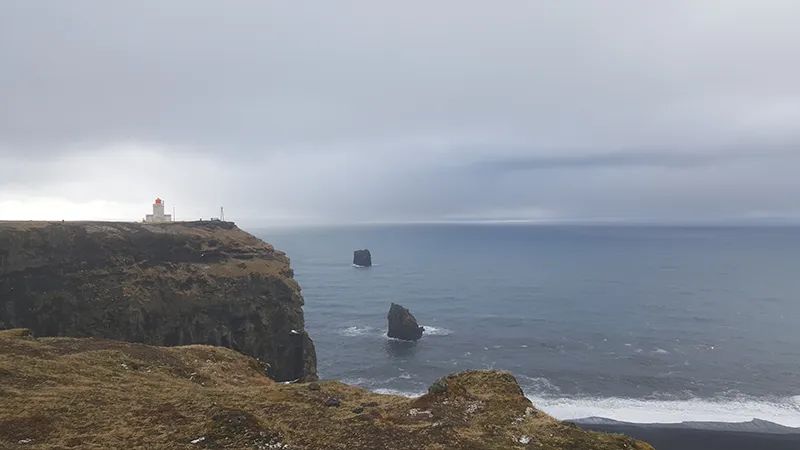
The Dyrhólaey Lighthouse was built in 1927.
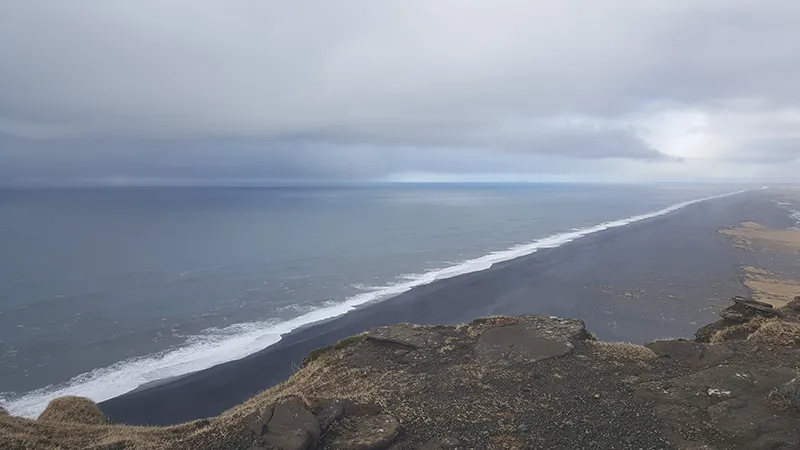
The Endless Black Beach named for its seemingly endless black sand coastline to the west of Dyrhólaey.
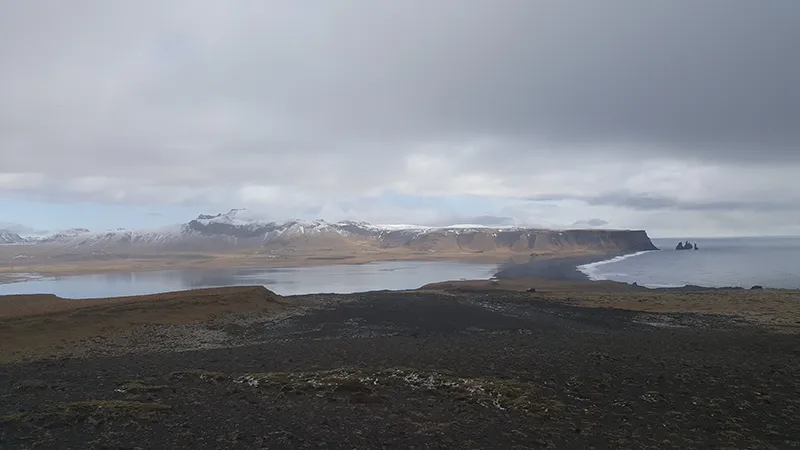
Mount Reynisfjall overlooking the legendary basalt sea stacks, Reynisdrangar, from atop Dyrhólaey.
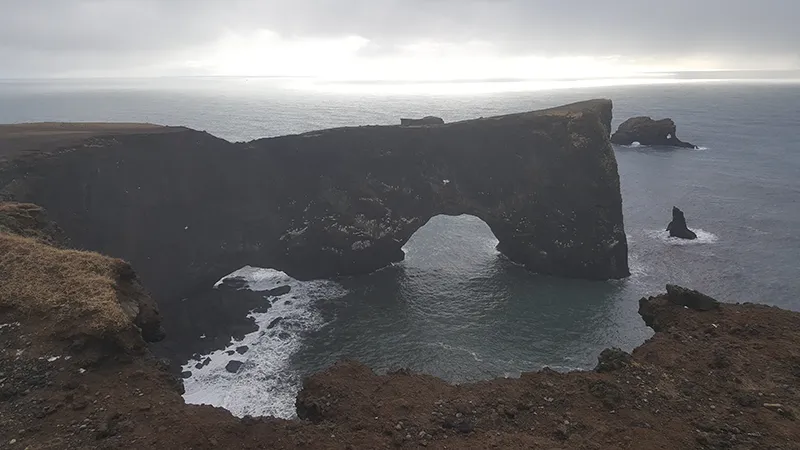
Dyrhólaey is Icelandic for “door hill island”
Blogger Bill Review
There is breathtaking scenery in every direction. The volcanic cliffs, black sand beaches, stunning rock formations, and fascinating birdlife are something truly exoctic, a word I never expected to use about a subarctic region. The air along with the roaring ocean is crisp and refreshing. This is an all day kind of place. Reynisfjara along with Dyrhólaey is a must-see if touring Iceland. I consider both to be one attraction, I would not visit one without visiting the other. Although one can drive from Reynisfjara to Dyrhólaey, I recommend hiking from one to the other for the full effect of this surreal environment.— William K. Rogers
Location
Reynisfjara Beach is located near the town of Vik in the municipality of myrdalshreppur in the Southern Region of Iceland.
Menu
article
info
arrow_circle_up